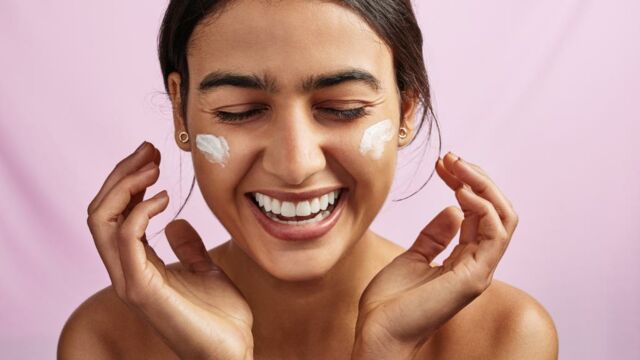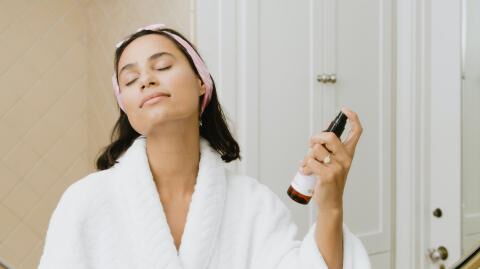Acne redness is the result of inflammation and trauma to the skin cells. Often, the more inflamed the skin is, the redder it will be. These red spots can often fade in their own with time but can also be notoriously hard to get rid of. Luckily many measures can be taken to reduce these red blemishes.
Discover our latest podcast
Why does acne cause redness?
Acne is caused by a multitude of factors, including sebum production, inflammation, dead skin cells and P.acnes bacteria. When pores become clogged with sebum and dead skin cells, it becomes a comedone. Then P. acnes bacteria enters the comedone and it becomes inflamed, resulting in a big red bump. Essentially, acne redness is caused by inflammation.
How to treat acne redness
As acne redness is caused by inflammation, products and treatments that reduce acne and inflammation will also help eliminate redness.
Benzoyl peroxide
Benzoyl peroxide works by targeting acne-causing bacteria. Benzoyl peroxide comes in both creams and cleansers and can be bought over the counter in various strengths. When starting on benzoyl peroxide, it’s a good idea to start on a lower strength as beginning on a high percentage too soon can cause further irritation.
Salicylic acid
Salicylic acid can help reduce both acne and redness by unclogging the pores and reducing the number of skin cells being shed. Salicylic acid is an easy to find ingredient and is present in many facial cleansers and exfoliants.
Azelaic acid
Azelaic acid is a naturally occurring acid and a byproduct of the yeast that lives on our skin. In skincare, azelaic acid works to reduce inflammation and redness and is even recommended for people with sensitive skin and who suffer from rosacea.
Niacinamide
Niacinamide, otherwise known as vitamin B3, is a popular skincare ingredient that eliminates inflammation in the skin and reduces sebum production. Niacinamide can be found in many cleansers, creams and even serums.
Retinoids
If your acne and acne redness isn’t responding to over the counter treatments, then a dermatologist or doctor’s appointment may be required for a prescription treatment.
In cases of moderate and severe acne, often retinoids such as adapalene or tretinoin will be prescribed. These spot treatments will reduce acne, inflammation and therefore redness.
Retinoids are sensitising when exposed to the sun, so only use them at night and follow up with an SPF during the day.
Antibiotics
Antibiotics are another prescription treatment that targets acne redness by reducing acne-causing bacteria and inflammation.
SPF
UVA and UVB rays from the sun can cause inflammation and damage to the skin and worsen acne redness. To prevent this,use an SPF when exposed to the sun and reapply it every 2-4 hours.
Green tea serums
Green tea contains antioxidants that aren’t only good for the body but also beneficial for the skin. When applied topically, green tea serums can help to reduce inflammation and redness. One study even found that by applying a green tea lotion to the face twice a day for two weeks, subjects saw a reduction of inflammatory acne. Other studies showed a similar decrease of inflammatory acne lesions by 89%.
Vitamin C
Topical vitamin C serums and creams are some of the best defences against acne redness. This skincare product reduces inflammation, acts as an antioxidant and works to promote skin healing, all of which can result in less redness.















